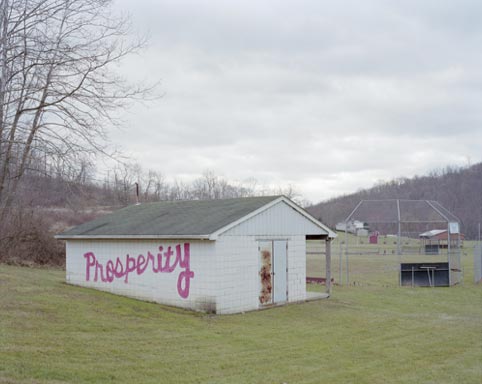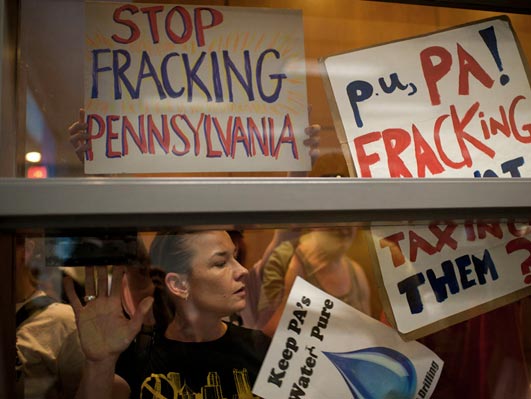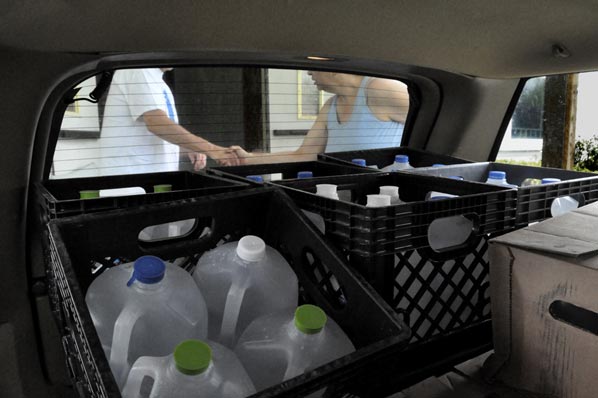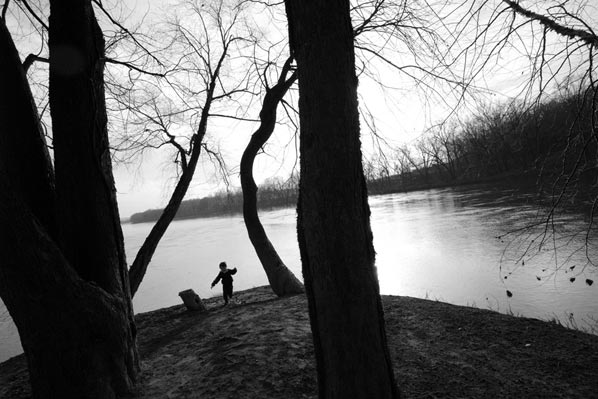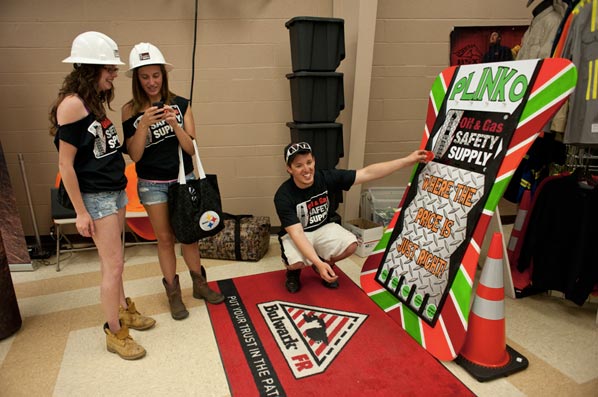This story first appeared in Pittsburgh sister publcation Pop City.
The Marcellus Shale Documentary Project, a collaborative photography project about gas drilling in Pennsylvania, is a uniquely Pittsburgh phenomenon. In fact, I am going to stick my neck out and say that as part of a long tradition, the MSDP could only have happened here.
So what is the MSDP? It began nearly two years ago with an idea to gather together a group of photographers to document the social and environmental effects of natural gas extraction in Pennsylvania. It is a project that takes a passionate, humanistic view. And the results – a travelling exhibition, a book, and a digital archive – have gained international attention.
And what makes it so peculiar to Pittsburgh?
Well first, a little background.
We are all aware of Pittsburgh’s history as a center of steel production. (A couple of nuggets: by the beginning of the twentieth century, Pittsburgh was responsible for approximately half of the nation’s entire steel production; according to Wikipedia, the city produced 95 million tons of the stuff during World War II).
We also know that Pittsburgh has a long and justly proud philanthropic tradition. Andrew Carnegie was among the first to suggest openly that the wealthy classes had an obligation to relinquish their fortunes: “the man who dies thus rich dies disgraced,” he wrote. (Perhaps his role in the Johnstown flood of 1889, and the Homestead strikes of 1892, had afflicted his conscience.) Regardless, Pittsburgh became, and remains, a shining example of the positive role philanthropies can have in the life of a community. We are regularly held up as the model for charitable giving.
What is perhaps less well known here in Pittsburgh is our relationship with photography. Some of the greatest names in twentieth-century documentary photography have worked in Pittsburgh. Lewis Hine was here in the early nineteen-hundreds (more about him in a moment); Margaret Bourke-White in the 1930s, Elliot Erwitt, Esther Bubley and W. Eugene Smith in the 50s – giants every one of them. Smith is responsible for so many of those steel-town images of the late 1950s which, like it or not, have become synonymous with the city.
The combination of industrial conditions, philanthropy, and photography is what brought Lewis Hine to Pittsburgh just over a hundred years ago. The Russell Sage Foundation (founded in New York in 1907 and still going strong) commissioned him to photograph for their Pittsburgh Survey, the first attempt at a comprehensive survey of conditions in a major American urban center. Hine was a pioneer of social documentary photography, the kind of photography that comes with a social conscience. The photographs he took for the Pittsburgh Survey are that curious mix of the matter-of-fact and the heart-rending– dignified images of ordinary working folk living tough lives. Hine paved the way for generations of socially conscious photographers to follow.
In the 1950s, the Allegheny Conference asked Roy Stryker to bring together a group of photographers to record the city prior to and during the so-called Renaissance, the post-war cleanup of the smoky city. (Stryker was responsible for organizing the enormous team of photographers that documented the New Deal, a project, incidentally, that brought Bourke-White to Pittsburgh). The Pittsburgh Photographic Library, which was a direct outcome of the 1950s initiative, and which is currently administered by the Carnegie Library, contains tens of thousands of images documenting life in the city. And while the Conference’s idea was to present Pittsburgh in something of a whitewashed, positive new light – well, photographers tend to have their own ideas. Eugene Smith, who had a real sense of compassion for the underdog, came back to the city on and off for years, producing one of the most beautiful, awful, and enduring portraits of a city in the history of documentary photography. In his Pittsburgh work, Smith was not shy about shining a light on the price that individual people paid for generating energy, and wealth, for the nation.
Pittsburgh loves being photographed, and it loves its photographers. For evidence of that, you need look no further than the magnificent 2011 Teenie Harris exhibit at the Carnegie Museum of Art. And Pittsburgh has not been shy about raising great names in this field: take Clyde Hare, Lynn Johnson, and Mark Perrott, to name but a few of whom we should be loud and proud.
Which brings us to the Marcellus Shale Documentary Project. Born in Pittsburgh, the MSDP brings together the three previously mentioned elements: Pittsburgh’s long philanthropic tradition; its history as the steel and energy capital; and its deep and abiding relationship with photography and photographers.
In the case of the MSDP, the story – natural gas drilling in Pennsylvania – is arguably one of the most important in the history of the Commonwealth. It is certainly one of the most heated and controversial. Like so much else that goes on here, it is a story with national value – gas exploration and use involves, and implicates, all of us. And to their great credit, it is a story that our great philanthropies have chosen to pay some attention to. The result, among many projects that have been supported by foundation monies, is the MSDP, a social documentary project that, in that uniquely Pittsburgh tradition, offers some insight, through photography, into the relationship between big energy, and the lives of ordinary people who are affected by it. For better and for worse.
The MSDP is an initiative that was conceived here, executed entirely in Pennsylvania, shot by photographers, four of whom are based in Pittsburgh, and funded by Pennsylvania philanthropies and individuals.
The images cover a lot of ground. Some demonstrate the benefits of harvesting an abundant fuel supply, while others help to reveal the social and environmental cost of drilling for natural gas in Pennsylvania – and in the traditions of good social documentary, this is the way the project leans. Hydraulic fracturing is a heavy industrial process, and industry always comes at a price. The images of the MSDP are a moving testament to the ways in which great forces can govern our lives, and, in true Pittsburgh fashion, they give voice to the ways in which ordinary people face up to those forces. Sometimes people benefit, on occasion they succumb; yet other times, they end up doing extraordinary things. As a society, we need to know about and own those stories. And the MSDP, through its large collection of images, gives them voice.
See the Marcellus Shale Documentary Project now through January 6 at Pittsburgh Filmmakers.
Photographs copyright the MSDP and the individual photographers
The MSDP is a collaboration of photographers Noah Addis, Nina Berman, Brian Cohen, Scott Goldsmith, Lynn Johnson and Martha Rial, in association with Laura Domencic and Pittsburgh Filmmakers/Pittsburgh Center for the Arts. The exhibit is on view at Filmmakers Gallery until January 6th and then travels to Philadelphia; the book is available from the store at PCA.
The MSDP was generously supported by The Sprout Fund, The Pittsburgh Foundation, The Heinz Endowments, The William Penn Foundation, and by individual gifts from Josh Whetzel, Nancy Bernstein and Cathy Raphael.
